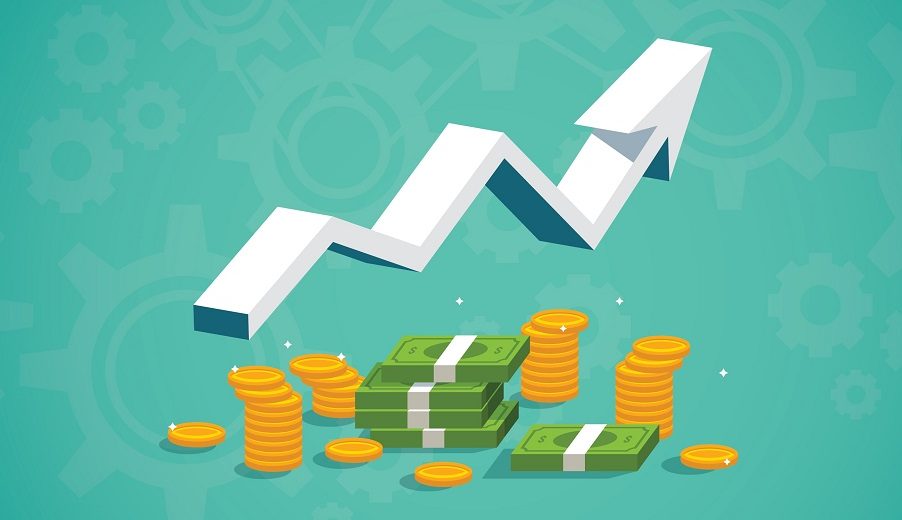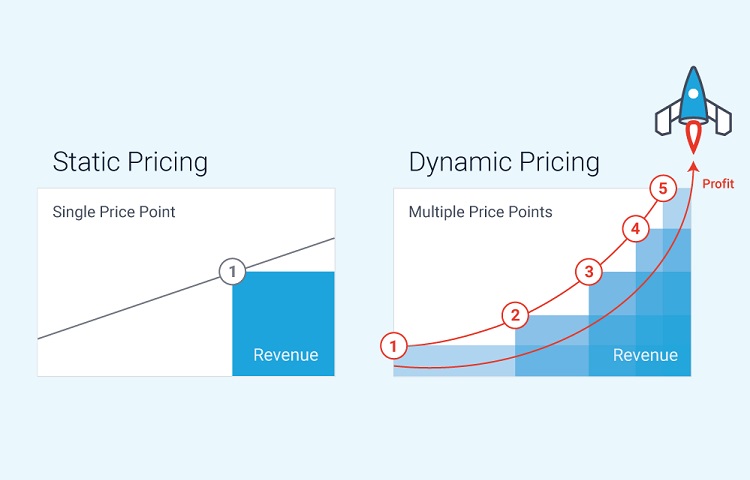Dynamic Pricing: Can It Work in Dropshipping?

An important part of starting an ecommerce business is knowing what pricing strategy to use, and when you start to compare all of them, it can quickly get confusing.
Dynamic pricing is one method that’s popular in ecommerce and retail stores, giving you a way to adjust pricing based on current market demands.
Does dynamic pricing work for dropshipping?
An ecommerce store that uses drop shipping needs to use a variety of pricing strategies, and dynamic pricing is one that works well. However, it has to be done carefully as the profit margins can be tight already with a dropshipping model, and you run the risk of losing money.
If you’re looking at ways to change up your store’s pricing strategy and work specifically with dropshipping, this guide can help. We look at the place of dynamic pricing in a dropshipping business and see how it’s calculated, whether it works, and how to find software and resources to help you do it right.
What Is Dynamic Pricing?
Dropshipping is a unique business model that requires a different approach when determining the cost of your goods.
Dynamic pricing is just one method you could consider with this type of business setup, and it means adjusting the price of items to reflect the changing market conditions and keeping it flexible.
Usually, an ecommerce business would use this type of pricing for several reasons, including:
- Trying to move slow inventory and get rid of weaker stock, or adversely, increase the price of top sellers so you can make more money from their already strong sales.
- Meet or undercut the price that competitors are offering so you’re seen as a preferred seller.
- Keeping up with changing trends or preparing for seasonal changes when certain products start to sell and others go quiet.
- Making sure your prices meet the demand of the market so you’re not charging too much or too little for this period.
The main goal is to find the optimum price point at any given time and adjust it accordingly, so your prices are always changing to keep in line. With the invention of ecommerce and online shopping, prices have never been more transparent, so it’s a smart move for a business to make when it comes to pricing strategies.
How Is It Calculated?
Dynamic pricing doesn’t rely on a set calculation but rather a number of factors that must be considered.
This depends also on what you’re basing your cost elasticity on, as comparing it to a competitor’s similar product will be calculated differently to adjust the price for an upcoming cool season.
Thankfully, there are loads of resources out there that do these calculations for you. depending on what you sell, how much of it you sell, and the behaviour of your customers, there’s likely to be an app, software or integration that will do the calculations for you and make adjustments within your online store for customers to see.
The best approach is to use several calculations to come up with a final figure, and these software programs do just that. They might have a formula that ensures you’re always charging equal or less than Competitor A’s price but never falling below 10% of your margin.
This gives them a few variables to work with but guarantees you’ll never start selling goods for anything less than a tiny profit.
Does Dynamic Pricing Work in Dropshipping?
Dropshipping is a unique business model. But when you add print-on-demand you should never be static with your pricing strategy if you want to succeed with it.
Dynamic pricing is one option that works with this type of business and you can set a number of variables to make sure your products are always priced according to the market.
With the help of a dedicated dynamic pricing strategy used in conjunction with your dropshipping business, you’ll be able to make this pricing methodology work for you.
Here are some rules you may consider implementing that will work with a dropshipping business:
- If I sell more than 20 of these shirts in the next 2 weeks, raise the price of them from $20 to $22.
- If none of these shirts sells within the next month, reduce the price from $20 to $19.
- Track sales over the next few weeks to see what our worst sellers are, and then offer a discount across the board on those products.
- Increase the price of our jumpers in the month before winter begins and keep those prices there for the entire season.
- If customers buy more than 10 shirts in one, offer a discount of 20% or free shipping for the purchase.
- One set of rules for items like jumpers and shirts, and another set of rules for cheaper products like hats and keyrings.
Although drop shipping is unique to other business models in that you’re only selling what people have ordered, it still requires savvy thinking. As the risk for low-profit margins is already there, you want to make sure you have good price elasticity and can be ready to adjust the cost of your products before and not after the opportunity has passed.
The Best Software for Dynamic Pricing
There’s never been a better time to have an ecommerce business, thanks to the wealth of online resources out there to use.
If you’re thinking of implementing a dynamic pricing strategy for your online store, there are loads of software options that make it easy and affordable.
- Prisync: This app is available through Shopify and helps you by tracking millions of products from e-commerce merchants around the globe. This app lets you track, monitor, and set dynamic pricing to change with the trends and the variables you set, so you’re always guaranteed to make a profit but do so in a way that keeps you ahead of the game.
- Dynamic Pricing by SpurIT: SpurIT has created another Shopify app and a more budget-friendly way to do some basic dynamic pricing for your dropshipping store. With this app, you’ll be able to set prices on autopilot, change prices depending on demand, and rules you can adjust so that products change automatically to suit them.
- PriceMole: Price Mole is a competitor tracker that doesn’t require you to enter any specific URLs or names of competitors, as it’ll do the searching for you. What you do with that information is up to you, and you can use it towards a dynamic pricing strategy, but overall it’s a handy way to see what others are doing on the market with the same types of products you sell.
- BlackCurve: This is a serious app with prices tailored to your specific needs, and it can be as basic as tracking competitors to a full suite of services like automatic price increases and integrations with everything from Spotify to Amazon. Although more expensive, it’s a smart choice for ecommerce stores and dropshipping businesses with a huge product range.
Most of these apps or software programs come with a 14-day free trial so you can see what they’re all about and determine whether you want them working for your ecommerce store. Their prices range from around $4.95 a month to over $100 a month depending on the size of your store, products, and what you want the software to do.
Why You Need to Consider Shipping Costs
The unique way that a dropshipping business operates means that it has to factor things in that others might not.
Shipping is the biggest consideration to make, and more importantly the cost of shipping because the process is done differently.
With drop shipping, there’s a chance your customers will wait longer than usual to have something shipped, especially if it’s being printed-on-demand. When you compare this to the speed at which other ecommerce stores are able to ship in today’s day and age, it can be a small disadvantage.
To get around this, you might want to offer free shipping or lower shipping costs to sweeten the deal. To do this, you can add the estimated cost for shipping into the product price so you’re not losing out too much.
Other Pricing Methods That Work for Drop Shipping
For a business model as unique as drop shipping, you don’t want to remain static in your pricing.
There are lots of pricing strategies out there that work for this specific type of e-commerce store and being flexible enough to try them out will likely lead you to the best one or a combination of a few.
- Fixed markup on cost: FMOC is a strategy that works well for dropshipping and sees add a set profit margin to each product, usually in a percentage. You can also use a different amount for each type of product so it varies depending on what you’re selling.
- Manufacturer suggested retail price: MSRP is when you price something according to the vendor’s recommended price, and if you’re able to give even a slight discount on this, it looks like a great deal to customers.
- Psychological strategies: There are several popular psychological strategies used in marketing and pricing that might make a price seem more appealing than it is. Using a lower amount like $9.99 as opposed to $10.00 makes it look cheaper, but it’s only really a discount of a cent.
- Discounts and coupons: Discounts and coupons are a good promotional tool and can help boost sales, and give you a way to price certain items. However, it’s a tricky process and needs to be done carefully, as you could be offering too much of a discount that takes away from your profits and there could be the potential for customers to take advantage.
- Fixed dollar addition: This means adding a fixed dollar amount to every sale so you’re covered for the dropshipping services. It’s also an easy way to project sales because you know exactly what profit will be made on each sale.
A Smart Way to Price
There’s never a straightforward answer to pricing strategies for your business and when it comes to the challenges of dropshipping, it pays to be flexible.
Dynamic pricing is just one method you might consider when pricing your goods to ensure you turn a good profit and keep customers happy, so make sure you weigh up all of the options.
Questions Related to Dynamic Pricing Strategy
A clever pricing strategy is needed for all business models, and when you operate a store with drop shipping, some work better than others.
To help you understand the basics of pricing your products, we’ve answered some commonly asked questions that might be of use.
What Are the Five Pricing Strategies?
There are five popular pricing strategies you can use in e-commerce including dynamic pricing, cost-plus pricing, price skimming, competition-based pricing, and penetration pricing.
The best option will depend on your business, the product you sell, and the market, and you shouldn’t be afraid to experiment to find the right one.
What is a Good Profit Margin for Drop Shipping?
A good profit margin for drop shipping will depend on a few factors like the product and quantity being purchased.
If you are going for the mass market, a general figure between 15% and 20% can be a baseline to start with, but you’ll have to factor in things like wholesale prices, credit card fees, and shipping costs to establish a number that’s right for your business.
If you are sell highly unique and popular prints, some seller are adding 100% margin. It really depend how well you know your customer and what you can get away with in terms of your brand.
How Do You Price Drop Shipping Items?
If you plan on using the dropshipping model, the easiest calculation is to determine what you’ll be charged by the dropshipping provider and what you want to charge customers, leaving you with whatever is left. It’s better to start with higher prices, as you can always lower your prices if needed. Raise your prices is only possible if the item is super popular.
Don’t forget to factor in things like website maintenance, development, and customer support, if that’s part of your business plan.





